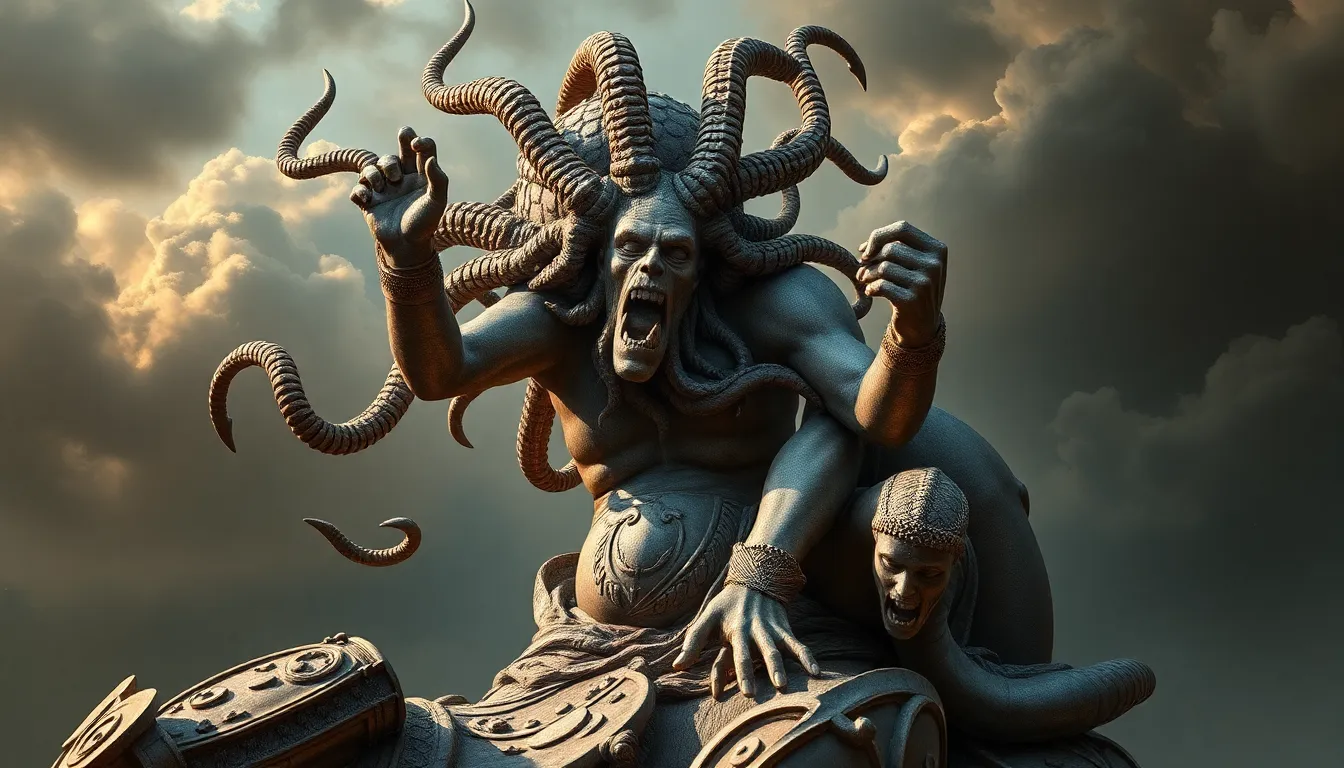The Gorgon as a Cautionary Tale: Morality in Ancient Myths
I. Introduction
The Gorgons are one of the most fascinating and fearsome figures in Greek mythology. Defined as three monstrous sisters—Medusa, Stheno, and Euryale—Gorgons are often depicted with snakes for hair, their gaze capable of turning anyone who looks upon them into stone. These mythical beings serve as potent symbols of both beauty and monstrosity.
In ancient narratives, cautionary tales were prevalent, often designed to convey moral lessons or societal values. The Gorgon myth embodies this concept, reflecting the intricacies of human nature and the consequences of various vices.
This article posits that the Gorgon myth serves as a reflection of societal morals and values, illustrating the consequences of hubris, jealousy, and the complex nature of beauty.
II. The Origins of the Gorgon Myth
The origins of Gorgon mythology can be traced back to ancient Greece, where these figures were woven into the fabric of cultural narratives. The Gorgons were believed to inhabit the edges of the known world, symbolizing chaos and danger.
Among the three sisters, Medusa is the most famous, often depicted as the tragic figure of the group. Stheno and Euryale, while equally terrifying, are less frequently mentioned in myths. Their significance is often overshadowed by Medusa’s poignant story.
In ancient art and literature, Gorgons were symbolic of the dangers of unchecked emotions and the consequences of beauty. They were often used as motifs to ward off evil, appearing on shields and buildings to protect against malevolence.
III. The Gorgon’s Transformation: Hubris and Punishment
Medusa’s backstory is a tale of beauty turned monstrous. Originally a stunning maiden, she was coveted by many, including Poseidon. However, it was her encounter with Poseidon in Athena’s temple that triggered her transformation. Angered by this defilement of her sacred space, Athena punished Medusa, turning her into a Gorgon.
This act of divine retribution highlights the theme of hubris, a recurring motif in Greek mythology. Medusa’s beauty, once a blessing, becomes a curse, illustrating how arrogance and pride can lead to one’s downfall.
IV. The Consequences of Jealousy and Betrayal
Medusa’s tragic story is further complicated by the jealousy of the gods. Her beauty incited jealousy, ultimately leading to her punishment. This theme of jealousy pervades ancient myths, often resulting in dire consequences for the wronged party.
In exploring jealousy, we find moral implications that resonate with societal reflections on betrayal. The repercussions of betrayal are severe, as seen in Medusa’s transformation and the subsequent fear she instills in others, perpetuating a cycle of isolation and despair.
V. The Nature of Beauty and Its Duality
Medusa epitomizes the duality of beauty and monstrosity. Initially celebrated for her enchanting looks, her transformation into a Gorgon reveals the darker side of beauty. This duality reflects ancient views on femininity, where beauty could empower yet also lead to destruction.
- Empowerment: Medusa’s beauty granted her attention and desirability.
- Destruction: Her transformation into a monster highlights how beauty can provoke fear and rejection.
This complex portrayal of femininity invites reflection on how societies perceive women and their beauty, often entangled with themes of power and vulnerability.
VI. The Gorgon’s Legacy in Modern Morality
The Gorgon myth continues to resonate in contemporary culture, often reinterpreted in literature, art, and film. Medusa, in particular, has become a symbol of female rage and empowerment, challenging traditional narratives of victimhood.
Lessons drawn from the Gorgon tale are evident in today’s moral discourse, as themes of jealousy, hubris, and the consequences of beauty remain relevant. The myth serves as a reminder of the complexities of human emotions and societal expectations.
VII. Comparative Analysis: Other Cautionary Tales in Ancient Myths
The Gorgon myth is not isolated; it shares similarities with various cautionary figures across different mythologies. For instance:
- Medusa (Greek): Symbolizes the dangers of beauty and jealousy.
- Lilith (Jewish): Represents female independence and the consequences of defiance.
- Persephone (Greek): Embodies the duality of life and death through her dual existence in the underworld and the world of the living.
While these figures differ in their narratives, they collectively convey universal themes of consequence and morality, demonstrating how ancient myths continue to inform our understanding of human behavior.
VIII. Conclusion
In summary, the Gorgon myth serves as a cautionary tale that encapsulates key moral lessons about hubris, jealousy, and the nature of beauty. Medusa’s tragic transformation from beauty to monstrosity exemplifies the dangers inherent in human emotions.
The enduring power of mythology lies in its ability to convey complex moral lessons, prompting reflection on contemporary ethical dilemmas. As we navigate the complexities of modern life, the insights drawn from ancient tales remain invaluable, urging us to consider the timeless nature of human experience.




